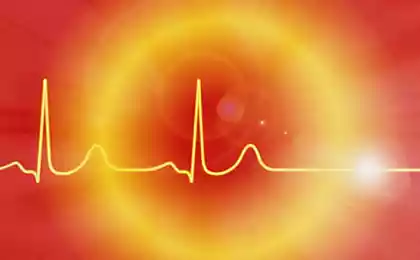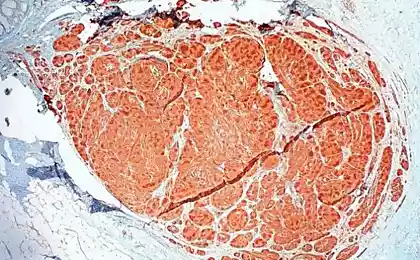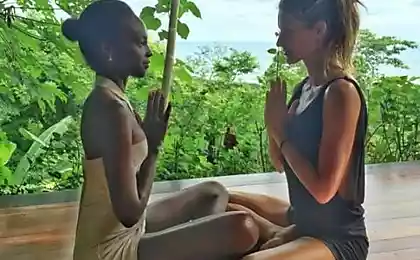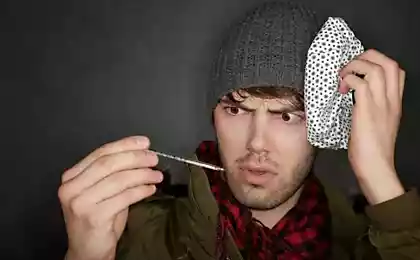466
Bacteria change circadian rhythms under the influence of its neighbors
Rhythms of metabolic activity in the bacterial cell vary depending on how many nutrients around it and what kind of bacteria-the neighbors live nearby.
Animals adhere to his order of the day: someone wakes up early, someone later, someone peak activity in the daytime hours, someone on late night. It is called diurnal rhythms, and you can find them in most living beings, although of different types of circadian rhythms have their own individual characteristics. However, we believe that the same kind of daily rhythm does not change: night beast will be released on hunt day, and the day the bird would not sing at night. However, bacteria, such a representation is refuted – as it turned out, peaks of activity are the most important molecular processes in the bacterial cell may depend on the specific ecological situation.

illustrations © Peter Allen
It was discovered by the researchers from the Massachusetts Institute of technology, analyzed the changes in mRNA synthesis in many marine bacteria. Samples of the bacterial flora was collected in the North Pacific ocean, and from each population of microorganisms samples were taken several times every few hours. Then in the laboratory were analyzed the mRNA of bacteria, to see which genes were active at a particular point in time. Special attention was paid to the genes-regulators of energy metabolism and protein synthesis.
The dominant group collected samples were bacteria Prochlorococcus, the most numerous photosynthetics on Earth. It is clear that because of hard dependency on sunlight from a variety of genes of Prochlorococcus were clear daily cycle of activity. However, heterotrophic species of bacteria that consume the finished organic matter also showed a clear daily "habits". For example, bacteria of the Roseobacter group began to act before the other microbes – their system of respiration and protein synthesis began to operate at full power sooner than others.
In General, how to write Edward DeLong (Edward DeLong) and his colleagues in the article usase, on bacterial community passed a wave of activity that began in the morning with photosynthetic Prochlorococcus and then switched to heterotrophic species, consuming organic matter produced photosynthetically. The level and time of activity of a particular species depended on what is the level of metabolism, that is, how much organic matter they need to sustain life.
It would seem that here surprising, circadian, or daily rhythms are the representatives of all three domains of life – bacteria, archaea and eukaryotes. However, until now, bacterial circadian rhythms were observed mostly in photosynthetic species. The fact that such per diem molecular-cellular "habits" is and heterotrophic groups was for biologists somewhat of a surprise.
And finally, most importantly – adjust their metabolic activity in bacteria depends on where and in what environment they live in. Last year a similar study was conducted with the coastal flora, and then a hard day uregulirovanii metabolic pathways could not be found. The point here obviously is that in coastal waters the bacteria take nutrients from different sources – for example, banks can live with a lot of different photosynthetic species, plus there may be some organics, is listed with the land, and in such abundance it makes no sense to do anything special to set your circadian rhythm for someone.
But in the open ocean, all more or less boils down to one provider – photosynthetic Prochlorococcus. That is, the circadian rhythm can be affected from the sun indirectly, through a daily rhythm of another species; in addition, this circadian rhythm may vary depending on the current environmental situation, depending on the environment. It is possible that more have been studied in this sense animals and humans similar factors can also play a role.
Source: nkj.ru
Animals adhere to his order of the day: someone wakes up early, someone later, someone peak activity in the daytime hours, someone on late night. It is called diurnal rhythms, and you can find them in most living beings, although of different types of circadian rhythms have their own individual characteristics. However, we believe that the same kind of daily rhythm does not change: night beast will be released on hunt day, and the day the bird would not sing at night. However, bacteria, such a representation is refuted – as it turned out, peaks of activity are the most important molecular processes in the bacterial cell may depend on the specific ecological situation.

illustrations © Peter Allen
It was discovered by the researchers from the Massachusetts Institute of technology, analyzed the changes in mRNA synthesis in many marine bacteria. Samples of the bacterial flora was collected in the North Pacific ocean, and from each population of microorganisms samples were taken several times every few hours. Then in the laboratory were analyzed the mRNA of bacteria, to see which genes were active at a particular point in time. Special attention was paid to the genes-regulators of energy metabolism and protein synthesis.
The dominant group collected samples were bacteria Prochlorococcus, the most numerous photosynthetics on Earth. It is clear that because of hard dependency on sunlight from a variety of genes of Prochlorococcus were clear daily cycle of activity. However, heterotrophic species of bacteria that consume the finished organic matter also showed a clear daily "habits". For example, bacteria of the Roseobacter group began to act before the other microbes – their system of respiration and protein synthesis began to operate at full power sooner than others.
In General, how to write Edward DeLong (Edward DeLong) and his colleagues in the article usase, on bacterial community passed a wave of activity that began in the morning with photosynthetic Prochlorococcus and then switched to heterotrophic species, consuming organic matter produced photosynthetically. The level and time of activity of a particular species depended on what is the level of metabolism, that is, how much organic matter they need to sustain life.
It would seem that here surprising, circadian, or daily rhythms are the representatives of all three domains of life – bacteria, archaea and eukaryotes. However, until now, bacterial circadian rhythms were observed mostly in photosynthetic species. The fact that such per diem molecular-cellular "habits" is and heterotrophic groups was for biologists somewhat of a surprise.
And finally, most importantly – adjust their metabolic activity in bacteria depends on where and in what environment they live in. Last year a similar study was conducted with the coastal flora, and then a hard day uregulirovanii metabolic pathways could not be found. The point here obviously is that in coastal waters the bacteria take nutrients from different sources – for example, banks can live with a lot of different photosynthetic species, plus there may be some organics, is listed with the land, and in such abundance it makes no sense to do anything special to set your circadian rhythm for someone.
But in the open ocean, all more or less boils down to one provider – photosynthetic Prochlorococcus. That is, the circadian rhythm can be affected from the sun indirectly, through a daily rhythm of another species; in addition, this circadian rhythm may vary depending on the current environmental situation, depending on the environment. It is possible that more have been studied in this sense animals and humans similar factors can also play a role.
Source: nkj.ru























